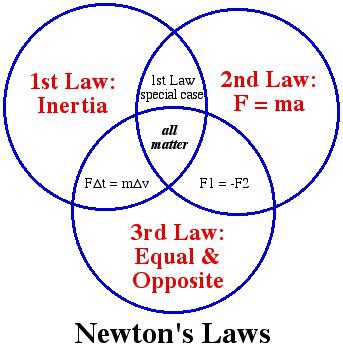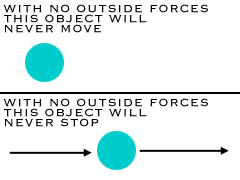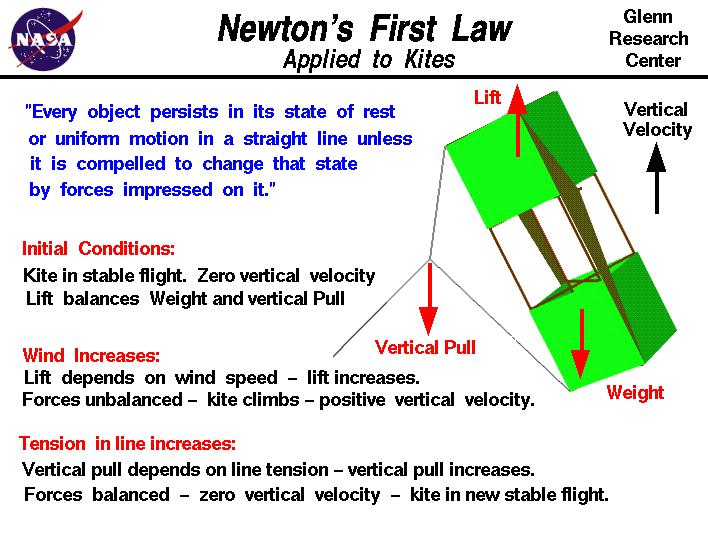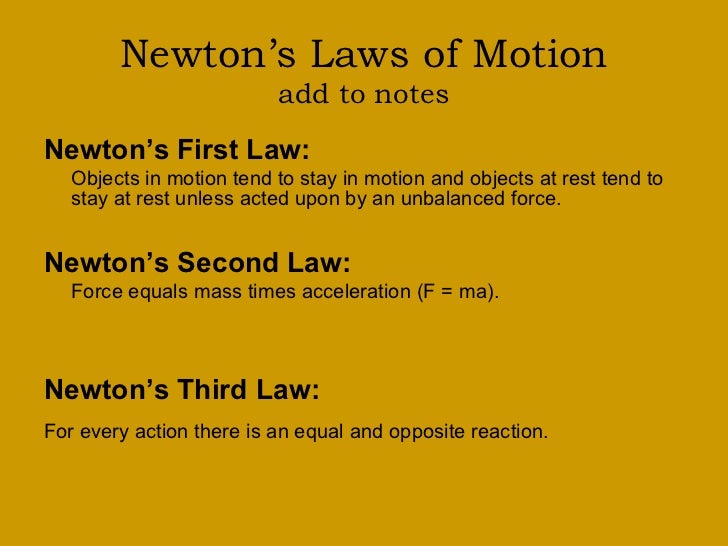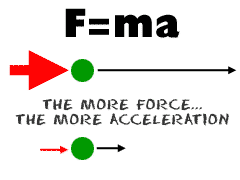Newton's laws of motion
In 1687 Isaac Newton's work Philosophiae Naturalis Principia Mathematica was published ( Mathematical Principles of Natural Philosophy ), in which Newton three principles (laws) formulated the movement known as the Newtonian axioms, laws of motion, Newton's principles or Newtonian laws. They are referred to in Newton's work with prima Lex, Lex secunda and tertia Lex, with a total of axioms, sive leges motus (, axioms or laws of motion ').
These laws form the foundation of classical mechanics. Although they are not considered fully in the context of modern physical theories such as quantum mechanics and relativity theory, reliable predictions are possible with their help within a broad range of validity.
First Newtonian law
The first Newtonian law is also prima lex, called principle of inertia, law of inertia or Inertialgesetz. It was first formulated by Galileo Galilei in 1638. The principle of inertia is making statements about the movement of physical bodies in inertial frames in the absence of external forces:
Latin original text:
The speed is constant so under the condition mentioned in magnitude and direction. A change in the motion state may be achieved by applying a force from the outside, for example by the force of gravity.
In classical mechanics, the first Newtonian law corresponds to the equilibrium conditions.
To generalize the principle of inertia in particular in special relativity theory, see also Meaning of inertia for important principles of mechanics.
Second Newtonian law
The second Newtonian law is also called lex secunda or action principle.
It is the basis for many of the mechanical equations of motion:
Latin original text:
Formally, this relationship between force and motion change is expressed as
The dot above a letter is introduced in a different context of Newton notation for the temporal change of a physical quantity. The characters in between means proportional, ie in fixed ratio standing.
In the original work of Newton was expressed in modern terms, already the general formulation described ( with momentum ). The Newton's writings while working with geometric representations of the limits of distance and area ratios.
In the version of the law was first formulated in 1750 by Leonhard Euler.
Here, the acceleration, which is a measure of the change in speed.
This equation is called - whether in Newton or Euler formulation - often fundamental equation of mechanics.
Third Newtonian law
The third Newtonian law is also called lex tertia interaction principle reaction principle, or reaction principle. It includes the following statement:
Latin original text:
The interaction principle is also referred to as the principle of action and reaction, or short " action equals reaction " (Latin actio est reactio ). The third Newtonian law requires an immediate action at a distance. Therefore, it has no general validity in the special theory of relativity. The interaction principle can also be formulated so that the sum of the forces is in a closed system is zero. Together with the second axiom follows conservation of momentum.
Principle of superposition of forces
In Newton's work, the principle of unimpeded superimposition or superposition principle of mechanics is described as an addition to the laws of motion.
Later, this superposition principle has been referred to as lex quarta, as the fourth Newtonian law.





